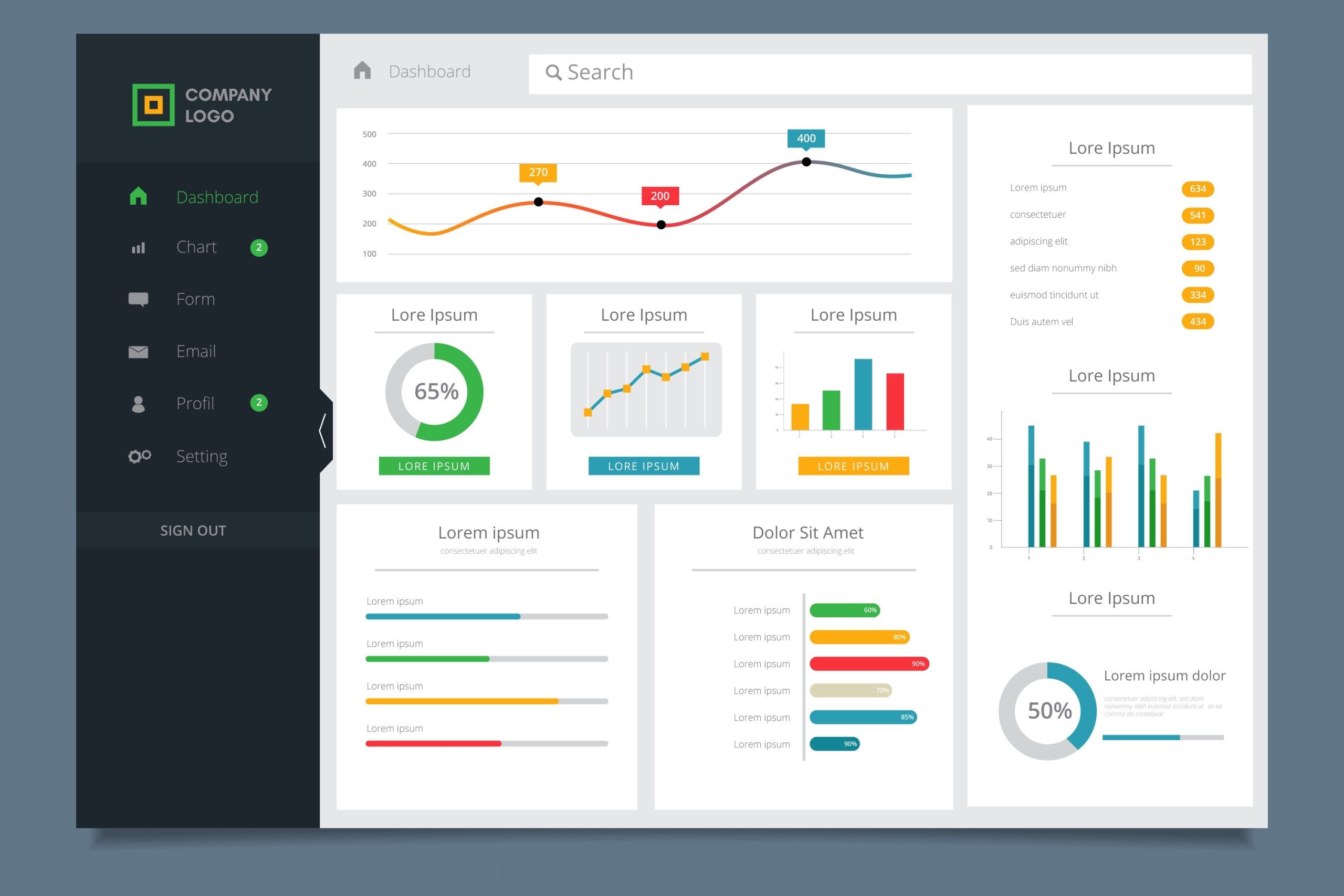In complex projects, especially those with multiple stakeholders, projects often face a gradual expansion of tasks and expectations. Left unchecked, this can lead to missed deadlines, ballooning costs, and compromised quality.
However, with a clear definition of boundaries, proactive management of client expectations, and strategic oversight throughout the project, it’s possible to keep scope creep at bay.
By implementing structured processes and maintaining consistent communication, teams can stay aligned with the original vision, ensuring timely, budget-friendly, and high-quality project delivery.
Defining the Scope to Avoid Scope Creep
The foundation of controlling scope creep lies in defining the project scope clearly from the start. Without a well-established scope, it becomes easy for stakeholders to introduce new ideas or expectations, leading to uncontrolled growth in the project’s requirements.
A detailed project scope should include a clear outline of deliverables, milestones, and timelines. By setting these expectations early on, everyone involved in the project understands what is included and, just as importantly, what is not.
Ensure that all stakeholders, including clients and team members, are aligned with this scope before any work begins. Any changes to the project scope should be documented and approved, preventing unforeseen changes from taking root.
Ensuring Team Alignment with Project Scope
One of the biggest contributors to scope creep is misalignment within the team. Without constant alignment on the project scope, tasks can drift away from the original plan. This misalignment can often result from miscommunication or a lack of clarity on the specific deliverables.
Regularly updating and reminding the team about the project scope is crucial. Utilize project management tools to keep the team informed about what is expected and ensure that tasks are aligned with the original objectives.
Regular meetings, check-ins, and status reports provide opportunities to address any discrepancies early, ensuring that everyone stays focused on the agreed-upon tasks.
Managing Client Expectations and Feedback
Client expectations are often a primary driver of scope creep. As projects progress, clients may request additional features, changes in deliverables, or alterations to the timeline. These requests, while often well-intended, can push the project beyond its original scope.
It is essential to manage client expectations proactively. Clear communication about what is included in the project scope and what falls outside of it can prevent clients from making assumptions or placing new demands on the project.
When feedback is provided, assess whether the changes are necessary or if they constitute scope creep. Document these conversations and confirm any agreed-upon changes in writing.
Identifying Common Causes of Scope Creep
In creative and marketing projects, scope creep is often caused by vague or evolving requirements. Clients may have an unclear vision at the outset, or their understanding of the project scope may change over time. Additionally, stakeholders might request additional deliverables or revisions based on new ideas or unforeseen challenges.
To prevent these issues, it is essential to have thorough initial discussions to define project goals and expectations. As the project progresses, regular check-ins and reviews ensure that any potential deviations from the original scope are addressed promptly.
Setting firm guidelines and being prepared to say no to scope changes that don’t align with the project’s core objectives can save time and resources.
Managing Unanticipated Changes
Despite the best planning, unanticipated changes can still arise. These changes might come in the form of new client requests, evolving market conditions, or unexpected challenges in the project execution phase.
When assessing whether these changes lead to scope creep, it’s essential to evaluate them against the original project scope. If the changes are aligned with the project’s objectives and can be accommodated within the existing timeline and budget, they may be acceptable.
However, if they expand the project beyond its original scope, it’s crucial to discuss the impact of these changes with the client and team, making necessary adjustments to the scope, timeline, and resources.
Steps to Control Scope Creep During Execution
Scope creep is particularly prevalent during the execution phase, where unforeseen demands or shifts in client expectations can disrupt the flow of the project. During this phase, it’s important to maintain strict control over changes and ensure that any adjustments are justified and agreed upon by all parties.
To manage scope creep during execution, implement a formal change control process. This process should involve documenting any changes, evaluating their impact on the project timeline and budget, and obtaining approval from key stakeholders.
Maintaining open communication with both the client and the team is crucial for ensuring that everyone remains aligned with the project scope.
Prioritizing Tasks and Deliverables
When new requests come in during a project, it can be tempting to accommodate them immediately. However, to prevent scope creep, it is essential to prioritize tasks and deliverables based on their relevance to the original project objectives.
Evaluate new requests to determine if they align with the core goals of the project. If they do not, it may be necessary to negotiate with the client, explaining that the request will require additional resources or time, thus affecting the project’s scope. By ensuring that only high-priority tasks are added to the project plan, you can maintain focus on the original scope.
Clarifying Scope with Documentation and Agreements
Clear documentation and formal agreements play a key role in controlling scope creep. Written contracts, change request forms, and detailed project charters ensure that both the team and client are on the same page from the start. These documents should outline the project’s objectives, deliverables, timeline, and budget.
When scope changes arise, having formal agreements in place makes it easier to track and evaluate these changes. Make sure that any amendments to the project scope are documented and mutually agreed upon before proceeding with additional work.
Assessing and Adjusting Goals for Scope Control
While flexibility is important in any project, frequent adjustments to project goals can lead to scope creep. If a client requests significant changes that affect the project’s direction, it’s important to assess whether these adjustments are truly necessary or if they are simply shifting the scope.
Regularly review the project’s goals and objectives to ensure they remain aligned with the original scope. When changes are required, adjust the project plan accordingly, making sure to communicate these updates to the client and stakeholders and reassess timelines, resources, and budgets.
Handling Stakeholder Requests for Additional Features
Stakeholders often request additional features or functionalities after the project has already begun. These requests can introduce scope creep if not carefully managed.
When handling additional feature requests, evaluate whether they are aligned with the original scope or if they would require a significant overhaul of the project. If they are outside the initial scope, explain the impact of these changes on the timeline, budget, and overall project.
Engage in discussions with the client to determine if the additional features can be added within the existing parameters or if they will need to be treated as separate work.
Recognizing Red Flags of Scope Creep
Scope creep doesn’t always happen suddenly—it often manifests as small changes that gradually accumulate. Recognizing the red flags early can prevent larger issues later.
Look for signs such as frequent changes to the project’s deliverables, unclear or evolving requirements, and clients pushing for additional work without adjusting the timeline or budget. By regularly reviewing the project’s scope and progress, you can spot these early warning signs and take action to mitigate them before they become significant problems.
Using Project Management Tools for Regular Check-ins
One of the most effective ways to control scope creep is by using project management tools to facilitate regular check-ins and updates. These tools allow project managers and teams to track the status of tasks, monitor progress, and ensure that everything remains aligned with the original project scope.
By utilizing project management software, you can schedule regular status meetings, generate progress reports, and ensure that any deviations from the project scope are identified and addressed promptly. This constant feedback loop helps keep the project on track and minimizes the risk of scope creep.
Managing Undefined Scope from the Start
When a project begins without a clearly defined scope, the risk of scope creep increases significantly. Without clear goals, deliverables, and timelines, both the client and the team may introduce new expectations as the project evolves.
To manage an undefined scope, start by defining the project’s high-level goals. Break these down into specific, actionable tasks and deliverables, ensuring that both the team and client understand what will and won’t be included. As the project progresses, continuously evaluate and refine the scope to ensure it remains focused and aligned with the original objectives.
Tracking and Documenting Changes with Tools
Tracking changes and documenting adjustments is crucial in managing scope creep. Every change, whether minor or significant, should be logged and evaluated for its impact on the project.
Project management tools allow you to keep detailed records of all changes, ensuring that any additions to the scope are properly assessed. These tools help teams track modifications to the timeline, budget, and resources, providing clarity on the overall impact of each change.
Ensuring Mutual Agreement on Scope Changes
Any changes to the project scope must be agreed upon by both the client and the project team. When scope adjustments occur, it’s important to document these changes and gain approval from all relevant stakeholders.
Clear communication is key during this process. Discuss the potential impact of scope changes on the project’s timeline, budget, and deliverables, and ensure that both parties are aligned on the new scope before proceeding with any additional work.
The Role of Timelines in Managing Scope Creep
Timelines play a crucial role in managing scope creep. When scope changes occur, they often have a direct impact on the project’s timeline, which can lead to delays and overworked teams.
By clearly defining project timelines and using project management tools to track progress, you can ensure that the project stays on track despite any scope changes. If a change requires additional time, make sure to adjust the timeline accordingly and communicate these updates to the client.
Handling Client-Requested Scope Changes Without Derailing the Project
Client-requested scope changes are inevitable, but they don’t have to derail the entire project. The key is to assess these requests carefully, communicate their impact on the project, and ensure that both the client and team are on board with any adjustments.
By addressing scope changes early, discussing their impact on resources and timelines, and using project# Top Methods to Control Scope Creep in Complex Projects
Scope creep is a common challenge in project management, particularly in complex projects where multiple stakeholders are involved. Without proper control, scope creep can derail timelines, exceed budgets, and ultimately affect the quality of the deliverables.
By defining clear boundaries, managing client expectations, and using effective strategies throughout the project lifecycle, you can keep scope creep under control and ensure that your projects stay on track.
Defining the Scope to Avoid Scope Creep
The foundation of controlling scope creep lies in defining the project scope clearly from the start. Without a well-established scope, it becomes easy for stakeholders to introduce new ideas or expectations, leading to uncontrolled growth in the project’s requirements.
A detailed project scope should include a clear outline of deliverables, milestones, and timelines. By setting these expectations early on, everyone involved in the project understands what is included and, just as importantly, what is not.
Ensure that all stakeholders, including clients and team members, are aligned with this scope before any work begins. Any changes to the project scope should be documented and approved, preventing unforeseen changes from taking root.
Ensuring Team Alignment with Project Scope
One of the biggest contributors to scope creep is misalignment within the team. Without constant alignment on the project scope, tasks can drift away from the original plan. This misalignment can often result from miscommunication or a lack of clarity on the specific deliverables.
Regularly updating and reminding the team about the project scope is crucial. Utilize project management tools to keep the team informed about what is expected and ensure that tasks are aligned with the original objectives. Regular meetings, check-ins, and status reports provide opportunities to address any discrepancies early, ensuring that everyone stays focused on the agreed-upon tasks.
Managing Client Expectations and Feedback
Client expectations are often a primary driver of scope creep. As projects progress, clients may request additional features, changes in deliverables, or alterations to the timeline. These requests, while often well-intended, can push the project beyond its original scope.
It is essential to manage client expectations proactively. Clear communication about what is included in the project scope and what falls outside of it can prevent clients from making assumptions or placing new demands on the project.
When feedback is provided, assess whether the changes are necessary or if they constitute scope creep. Document these conversations and confirm any agreed-upon changes in writing.
Identifying Common Causes of Scope Creep
In creative and marketing projects, scope creep is often caused by vague or evolving requirements. Clients may have an unclear vision at the outset, or their understanding of the project scope may change over time. Additionally, stakeholders might request additional deliverables or revisions based on new ideas or unforeseen challenges.
To prevent these issues, it is essential to have thorough initial discussions to define project goals and expectations. As the project progresses, regular check-ins and reviews ensure that any potential deviations from the original scope are addressed promptly.
Setting firm guidelines and being prepared to say no to scope changes that don’t align with the project’s core objectives can save time and resources.
Managing Unanticipated Changes
Despite the best planning, unanticipated changes can still arise. These changes might come in the form of new client requests, evolving market conditions, or unexpected challenges in the project execution phase.
When assessing whether these changes lead to scope creep, it’s essential to evaluate them against the original project scope. If the changes are aligned with the project’s objectives and can be accommodated within the existing timeline and budget, they may be acceptable.
However, if they expand the project beyond its original scope, it’s crucial to discuss the impact of these changes with the client and team, making necessary adjustments to the scope, timeline, and resources.
Steps to Control Scope Creep During Execution
Scope creep is particularly prevalent during the execution phase, where unforeseen demands or shifts in client expectations can disrupt the flow of the project. During this phase, it’s important to maintain strict control over changes and ensure that any adjustments are justified and agreed upon by all parties.
To manage scope creep during execution, implement a formal change control process. This process should involve documenting any changes, evaluating their impact on the project timeline and budget, and obtaining approval from key stakeholders. Maintaining open communication with both the client and the team is crucial for ensuring that everyone remains aligned with the project scope.
Step 1: Prioritizing Tasks and Deliverables
When new requests come in during a project, it can be tempting to accommodate them immediately. However, to prevent scope creep, it is essential to prioritize tasks and deliverables based on their relevance to the original project objectives.
Evaluate new requests to determine if they align with the core goals of the project. If they do not, it may be necessary to negotiate with the client, explaining that the request will require additional resources or time, thus affecting the project’s scope. By ensuring that only high-priority tasks are added to the project plan, you can maintain focus on the original scope.
Step 2: Clarifying Scope with Documentation and Agreements
Clear documentation and formal agreements play a key role in controlling scope creep. Written contracts, change request forms, and detailed project charters ensure that both the team and client are on the same page from the start. These documents should outline the project’s objectives, deliverables, timeline, and budget.
When scope changes arise, having formal agreements in place makes it easier to track and evaluate these changes. Make sure that any amendments to the project scope are documented and mutually agreed upon before proceeding with additional work.
Step 3: Assessing and Adjusting Goals for Scope Control
While flexibility is important in any project, frequent adjustments to project goals can lead to scope creep. If a client requests significant changes that affect the project’s direction, it’s important to assess whether these adjustments are truly necessary or if they are simply shifting the scope.
Regularly review the project’s goals and objectives to ensure they remain aligned with the original scope. When changes are required, adjust the project plan accordingly, making sure to communicate these updates to the client and stakeholders and reassess timelines, resources, and budgets.
Step 4: Handling Stakeholder Requests for Additional Features
Stakeholders often request additional features or functionalities after the project has already begun. These requests can introduce scope creep if not carefully managed.
When handling additional feature requests, evaluate whether they are aligned with the original scope or if they would require a significant overhaul of the project. If they are outside the initial scope, explain the impact of these changes on the timeline, budget, and overall project.
Engage in discussions with the client to determine if the additional features can be added within the existing parameters or if they will need to be treated as separate work.
Step 5: Recognizing Red Flags of Scope Creep
Scope creep doesn’t always happen suddenly—it often manifests as small changes that gradually accumulate. Recognizing the red flags early can prevent larger issues later.
Look for signs such as frequent changes to the project’s deliverables, unclear or evolving requirements, and clients pushing for additional work without adjusting the timeline or budget. By regularly reviewing the project’s scope and progress, you can spot these early warning signs and take action to mitigate them before they become significant problems.
Step 6: Using Project Management Tools for Regular Check-ins
One of the most effective ways to control scope creep is by using project management tools to facilitate regular check-ins and updates. These tools allow project managers and teams to track the status of tasks, monitor progress, and ensure that everything remains aligned with the original project scope.
By utilizing project management software, you can schedule regular status meetings, generate progress reports, and ensure that any deviations from the project scope are identified and addressed promptly. This constant feedback loop helps keep the project on track and minimizes the risk of scope creep.
Step 7: Managing Undefined Scope from the Start
When a project begins without a clearly defined scope, the risk of scope creep increases significantly. Without clear goals, deliverables, and timelines, both the client and the team may introduce new expectations as the project evolves.
To manage an undefined scope, start by defining the project’s high-level goals. Break these down into specific, actionable tasks and deliverables, ensuring that both the team and client understand what will and won’t be included. As the project progresses, continuously evaluate and refine the scope to ensure it remains focused and aligned with the original objectives.
Step 8: Tracking and Documenting Changes with Tools
Tracking changes and documenting adjustments is crucial in managing scope creep. Every change, whether minor or significant, should be logged and evaluated for its impact on the project.
Project management tools allow you to keep detailed records of all changes, ensuring that any additions to the scope are properly assessed. These tools help teams track modifications to the timeline, budget, and resources, providing clarity on the overall impact of each change.
Step 9: Ensuring Mutual Agreement on Scope Changes
Any changes to the project scope must be agreed upon by both the client and the project team. When scope adjustments occur, it’s important to document these changes and gain approval from all relevant stakeholders.
Clear communication is key during this process. Discuss the potential impact of scope changes on the project’s timeline, budget, and deliverables, and ensure that both parties are aligned on the new scope before proceeding with any additional work.
The Role of Timelines in Managing Scope Creep
Timelines play a crucial role in managing scope creep. When scope changes occur, they often have a direct impact on the project’s timeline, which can lead to delays and overworked teams.
By clearly defining project timelines and using project management tools to track progress, you can ensure that the project stays on track despite any scope changes. If a change requires additional time, make sure to adjust the timeline accordingly and communicate these updates to the client.
Handling Client-Requested Scope Changes Without Derailing the Project
Client-requested scope changes are inevitable, but they don’t have to derail the entire project. The key is to assess these requests carefully, communicate their impact on the project, and ensure that both the client and team are on board with any adjustments.
By addressing scope changes early, discussing their impact on resources and timelines, and using project management tools to control scope creep effectively in complex projects, here are the top methods:
-
Clear Project Scope Definition: Start by setting precise deliverables, timelines, and milestones to avoid ambiguity. This prevents new, unsolicited requests from sneaking into the project.
-
Stakeholder Alignment: Regular check-ins and updates ensure that all team members and stakeholders understand the project’s boundaries. Miscommunication often leads to scope creep, so clear, ongoing communication is key.
-
Managing Client Expectations: Early discussions about what’s included in the project scope and a formal process for handling additional requests will help clients stay aligned with the original scope.
-
Formal Change Control Process: Any adjustments to the scope should be evaluated, documented, and approved by all relevant stakeholders before being executed.
-
Regular Project Management Tool Updates: Use tools for tracking tasks, project progress, and changes. These allow teams to stay on track and quickly spot deviations from the original plan.
By following these methods, teams can better manage scope changes and avoid derailing the project timeline, budget, and deliverables.
Conclusion
Controlling scope creep is essential for ensuring projects stay on track, within budget, and aligned with client expectations. By defining a clear project scope, maintaining constant communication, and using formal change control processes, project managers can mitigate the risks of scope creep.
Regular check-ins, proper documentation, and client education also play crucial roles in preventing unnecessary changes. With these strategies in place, teams can keep their projects focused, ensuring successful outcomes.
For an affordable project management solution to streamline scope management, try Pinrom, available for just $1 per user.









